CONSERVATION CORNER
A weekly blog for all things conservation
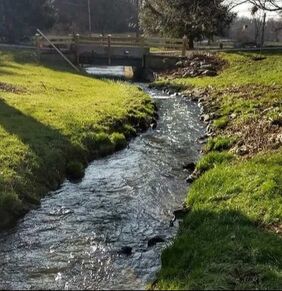 By: Jennifer R Fetter; Penn State Extension Having a stream in your yard can be a beautiful addition to your property. It can also be a source of frustration and confusion when things aren't going well. Winter weather and heavy rains this spring my have taken a toll on your backyard stream this year. Or maybe your stream has been slowly eroding for many years. The stream might be getting deeper and deeper. The banks might be caving in, taking your valuable property for a ride downstream. Maybe your foot bridge or fence is about to fall in the stream too.
3 Comments
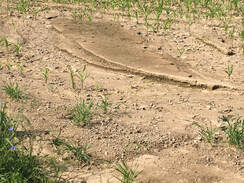 By: Pennsylvania Department of Environmental Protection Pennsylvania’s Commonwealth boundaries encompass at least 85,568 miles of streams and 242 major publicly accessible lakes comprising 125,119 surface water acres. Section 303 of the Federal Clean Water Act requires that states, territories, and authorized tribes, collectively referred to in the act as "states," prepare water quality standards and assess all streams and lakes. Since1972 enactment, each water body is to have calculated an upper pollution limit that maintains water quality meeting state standards for each pollutant present. Standards vary among the states depending on each state’s protected uses. In Pennsylvania, these protected uses are listed as fish consumption, recreation, public water use, and biological life. 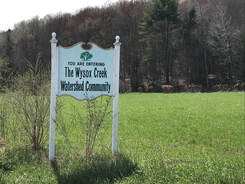 By: Joe Quatrini, Technical Team Leader, BCCD What is a watershed? For some reading this article, a definition or explanation may be easy to come by either due to where you live, your profession, or what your hobbies may be. For others, maybe it’s a word you hear on the nightly news or on social media around discussions led by the Environmental Protection Agency (EPA) and regulations associated with the Chesapeake Bay. Or maybe this is the first time you’ve heard it. By: Joe Quatrini, Technical Team Leader, BCCD
Recently, the Bradford County Commissioners made a huge commitment to watershed rehabilitation. Using money from the Act 13 Unconventional Gas Well Fund, the Commissioners have dedicated $200,000 per year toward the restoration of streams to reduce erosion, prevent property loss, protect infrastructure, and improve flood resilience. Building off past successes of the County Stream Initiative program, the commissioners are entrusting BCCD with the administration of these new funds. The funds will be utilized in three critical stream areas: stream stabilization, emergency stream response, and to further the Bradford County stream pilot program. Currently, the Commissioners have designated $110,000 to stream stabilization, $75,000 to emergency stream response, and $15,000 to the stream pilot program. Hopefully, this funding will last for years to come and significant natural resource restoration can be accomplished. 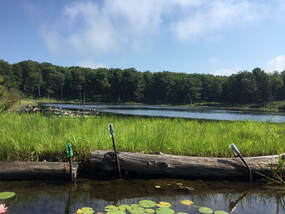 By: Tess Flynn-Belles, Natural Resource Specialist, Bradford County Conservation District This past year has provided a lot of us with plenty of time to reflect on our properties and home and come up with new ways to freshen the place up. With the amount of calls that the Conservation District received about new pond construction last year, it must have been high on some of your lists! So, with that, we thought we would provide some things to consider before you start. 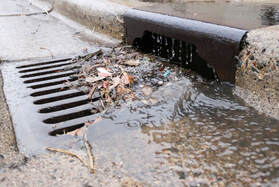 By: Kevin Brown, Agricultural Resource Specialist Ok, let’s get down to the brass taxes. What is a rain tax, where is it happening, and what can I do to help the situation without going to that extreme? Who wants to be taxed for rain falling on their property? “We don’t have control over that” is what they say, but we DO have control over what happens to it from there. Can you imagine Towanda (or insert your community here) before it was Towanda? Especially because it is built on a side hill. One thousand years ago a 2-inch rainfall event happened, and all that rain went into the ground. The river level was unaffected. The rainfall gradually moved through the soil layers and the excess was released into the river days or weeks or even months later. The result, no flooding. Picture it during the next 2-inch rainfall that we get. Rain hits your home, it hits the streets, it hits the schools and businesses. In some places there are no places whatsoever for it to infiltrate into the ground. It goes from your downspout to the curb, dumped into the street, adds to the water already running down the street, hits the storm drain and goes DIRECTLY to the river. The result, billions of gallons of water now going down the river that never made it there before. And it is going there like NOW. Add that to water coming from Sayre and Waverly and Athens and Chemung and Binghamton and Owego, etc. The town fathers didn’t think about this when they set up some of the systems, but as more and more communities grow, they are thinking about it now. Now we have a huge problem. We have concentrated all that water and sent it downstream (along with it- pollution, erosion, sediment, nutrients, etc.). Again, do we care enough to try and fix it one house at a time? Or do we institute a (wait for it…) Stormwater Fee (RAIN TAX)? NNNOOOOOOOO!! 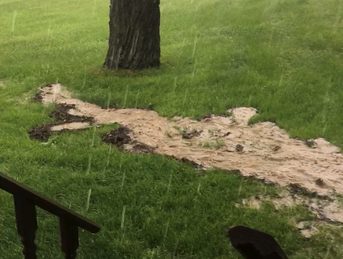 By: Kevin Brown, Agricultural Resource Specialist Hopefully part 1 gave you some things to think about and maybe even got your blood boiling a little bit. That was my intention. I want you thinking about this and even thinking that maybe you can do something about it in your own little corner of the world. It really doesn’t take much to make a huge difference in some cases. Our goal, as homeowners AND business owners, should be that absolutely no rainwater leaves our properties, especially in normal rainfall events. NONE. I know it is easy to run inside while it is raining and just not realize, or maybe even care, where that rainwater is going. Well we should. Next time it rains, grab the rain suit and head outside. Take a stroll along your property and take note of what you see. Are you adding to the problem, or not? Is water leaving your property, or not? If it is, is there anything you can do about it? 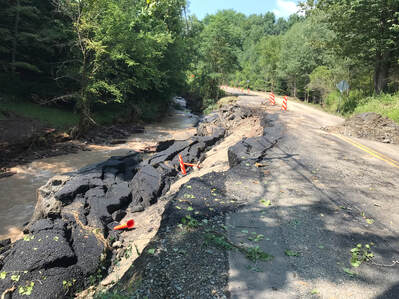 By: Jonathan VanNoy, Natural Resource Specialist In 1972, the Environmental Protection Agency published regulations to reduce pollution through a new program; the National Pollutant Discharge Elimination System (NPDES, for short). This new program took aim at reducing pollutants to waters of the United States. In Pennsylvania, the NPDES program is administered by the State Department of Environmental Protection (DEP). In Bradford County, the Conservation District has a delegation agreement with DEP to administer the NPDES program at the County level. This allows people applying for earth disturbance permits in Bradford County to submit NPDES plans to the Conservation District for review and approval, speeding up the permit process. Today we are going to look at the NPDES program in Bradford County as it relates to earth disturbance and the resulting stormwater from construction activities. Stormwater, simply put, is runoff from precipitation, snowmelt, surface runoff and drainage. 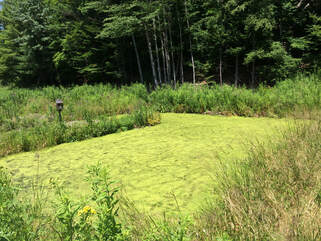 By: Jonathan VanNoy, Natural Resource Specialist If I were to tell you to close your eyes and describe what comes to mind when you hear the word “wetland”, what would you describe? A stagnant, slimy waterbody? A grassy, soupy area with cattails? Maybe that lower field that you can only make hay on every few years? How about that special place that you love to hunt ducks, or trap muskrats? You may have an archery stand on the edge of a swamp that comes to mind. You might describe that spot in your woods that pools water each spring, and for one or two warm nights a year is just crawling with toads or salamanders as they congregate to lay masses of eggs. (Go to a local vernal pool, pond, swamp or wetland on a warm, spring evening and pull up a chair and just listen and watch. There is NOTHING that can compare to the sound you will hear if the frogs or toads have congregated!) |
AuthorsVarious staff at the Bradford County Conservation District Archives
April 2024
Categories
All
|
